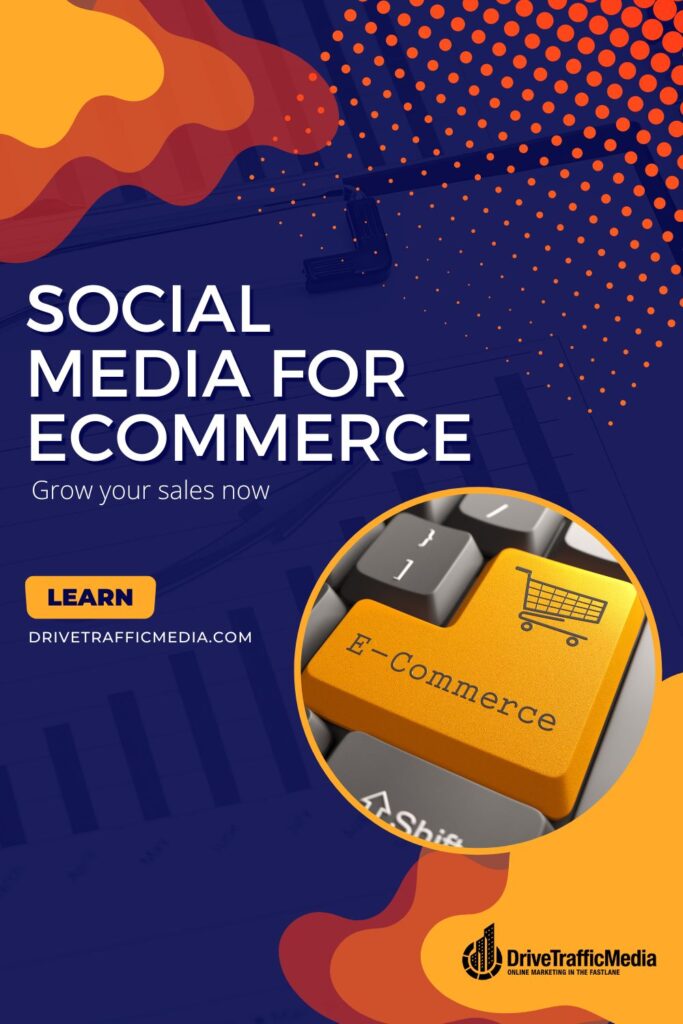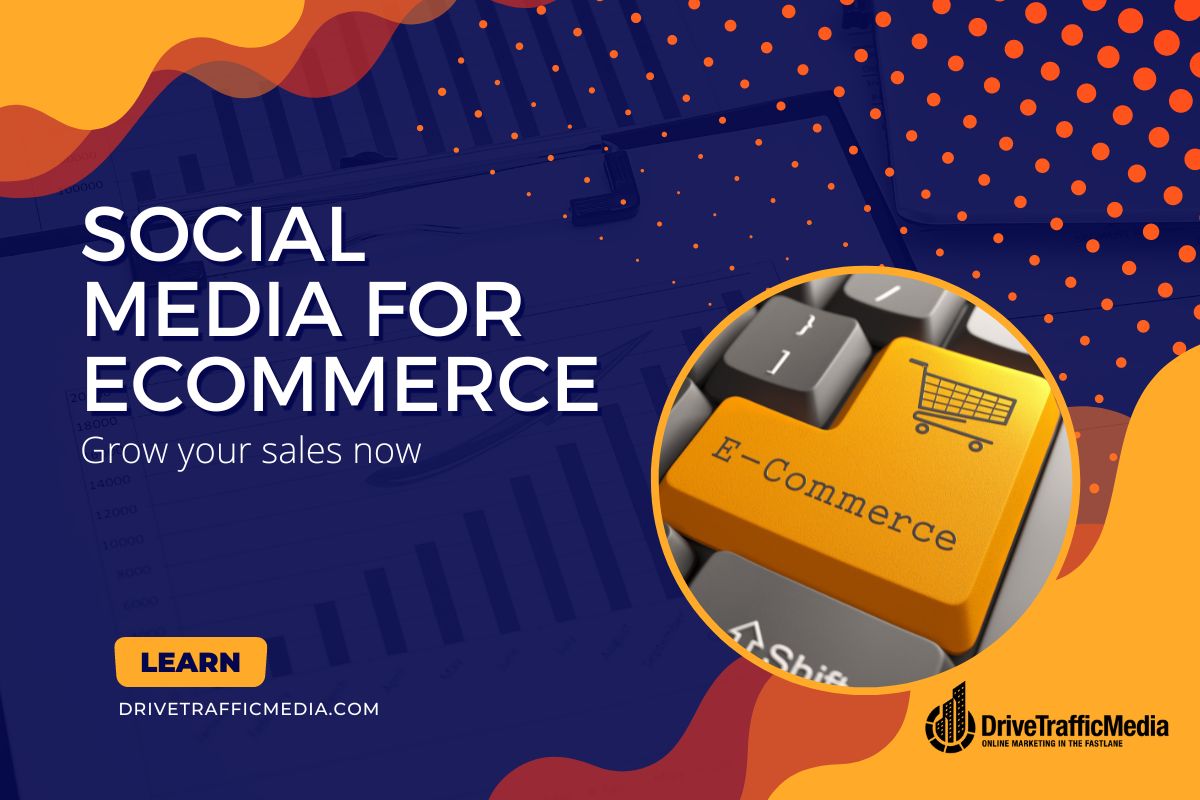eCommerce websites are one of the quickest sectors to expand for all digital companies. This is primarily due to COVID-19 and the pandemic. However, this trend has a history that began far before COVID-19. Online shoppers buy products online instead of in stores mainly because of how easy and convenient it is.
The eCommerce world is very competitive and continuously growing requirements of customers. While it may need lots of time and precision, it is crucial to make an offer that potential buyers are interested in. You must remember to manage your sales and communication with your online buyers, and social media is the best way to do that.
What is the best platform for eCommerce on social media?
Some of the best social media platforms for eCommerce are Facebook, Instagram, and Pinterest.
Facebook has almost three billion active users monthly. Due to this, their offer is often expanded to online stores.
There are three key ways that Facebook helps companies reach their target audience: how people use Facebook, Facebook Ads, and Facebook Shops.
How Facebook is used
In addition to social media, Facebook serves as a news information starting point, a marketplace to sell things, and a tool to find jobs or gigs.
Around 80% of shoppers in America find their retail items to purchase via Facebook, making Facebook one of the top social media platforms to use and be on, mainly because of its wide variety of offers for eCommerce companies.
How to use Facebook Ads
With Facebook Ads, you can engage with online buyers intrigued by your offer solely based on their unique features. Facebook presents more than 1,000 choices and a complete section of ad formats.
You should show interest in photo, messenger, and collection ads if you are in charge of an eCommerce website.
With those, Facebook Ads can be used to distribute media information and content to your possible online buyers, which includes, but is not limited to, tests, product unboxing, and presentations.
Facebook Shops
Facebook Marketplace started as a section allowing online users and corporations to showcase their products.
The Marketplace was initially very restricted as you could only add a few photographs and a short product description. Due to this limited form, Facebook created a new platform called Facebook Shops. Shops were created with the intent of helping online companies being able to create digital stores for free via Instagram and Facebook.
Now, Shops are incorporated with your social media profiles on Instagram and Facebook. You can access Shops through Facebook ads and stories.
In the Shop, your online buyers can look through products, save some of their favorites to look at later, purchase something, and even complete their payment without leaving the Facebook app.
One of the significant parts of Shops is that you can easily talk to your online shoppers through apps like WhatsApp, Messenger, and Instagram Direct. In addition, Facebook gives you absolute unification with eCommerce platforms.

For example, Vans’ online Facebook Shop is one of Facebook’s best online shops. They have their most well-known shoes; you can view their models, collections, in-stock availability, and cost. In addition, you can view a picture next to each product, along with the price and a link to purchase it.
Using Facebook Shops can be significant due to how easy it is to start. Unlike other services, there are not many buttons or options that overcomplicate the creation process. However, because of the newness of Facebook Shops, it is not a preceding sales outlet yet.
Shopping on Instagram
Instagram is a social media platform that has been around since 2010. As of the end of 2021, it had over two billion active users monthly. Because the same business owns Facebook and Instagram, they run very similarly to one another. Despite this, though, Instagram is a very different program and platform.
Facebook differs from Instagram as it is universal for posting in groups for discussion, photos, or videos. On the other hand, Instagram is only about media content, and it is so important that people’s videos and photos are the core middle of each person’s profile.
Therefore, if your profile on Instagram does not have very aesthetically pleasing visuals, your photos probably won’t receive much attention. In addition, Instagram is designed initially as an application for phones, making some limitations to what you can do on the computer version.
Once your store starts on Instagram, it becomes a platform to market your brand history. This gives your users the ability to search through your collections and products. Groups expressly permit you to customize the store’s offer by allocating items to specific occasions—for example, gifts, new arrivals, seasonal trends, etc.
Next up are the pages on product information. These pages allow you to post the applicable information in your catalog, and the report includes things like the price and product description of the items. Like Facebook, a feature allows you to check out on the app and finish your order without departing the platform.
Instagram is one of the most powerful platforms because it is one of the most innovative places to post product photos. Photographing your products in a high-quality and professional manner will make them thrive on Instagram.
In addition, product tags allow you to tag your products in different photos that ultimately guide users who are curious about them directly to your online profile.
Lastly, product launches are a way to promote unique promotions and new arrivals.
In sum, Instagram has evolved to incorporate a reliable shopping tab. It has adapted to become a site where online users can find new clothing brands, new products, and special offers that editors specifically pick so they are customized to users’ preferences.
How to use Pinterest for marketing and eCommerce
At first glance, Pinterest would not seem like an impactful platform for marketing and social media, with only 444 million users, especially compared to Instagram and Facebook’s much higher amount of active users.
However, Pinterest shares many similarities with the other two platforms, as you can show your products online. In addition, you can post collections of products and short-lengthed videos.
Shopify posted an article in the year 2019 on Pinterest marketing. 90% of users say Pinterest helps them in making buying decisions. 78% of users believe that branded content posted on Pinterest is beneficial. And lastly, 66% of users purchase products after discovering the brand’s pins.
When getting started with Pinterest, you first want to create an account.
Next, you want to post a catalog of your products and then transform that catalog into pins of your products. Next, your profile will receive a tab labeled “Shop.” You can even upload more than one feed to one Pinterest account, which controls which types of products appear in different markets.
In addition, something unique Pinterest offers is the chance to combine your profile with the well-known platform, Shopify. You can also integrate the Pinterest tag with your digital website, which allows you to optimize ads and calculate conversions for a better online buying venture.
Pinterest Ads let you reach four goals: awareness, consideration, conversions, and offline sales. Accomplishing these things will build your brand and product awareness, get more digital traffic, and increase your signups, in-person purchases, and subscriptions.
One of Pinterest’s best-designed accounts for guiding online stores is Nordstrom, Inc. Nordstrom is a well-known fashion retail company with one of the best Pinterest profiles. Users can visit their profile to find thousands or more pins and ideas on many topics, including weddings, home, or college.
Publisher
The publisher is helpful when you are running various social media profiles. It allows you to manage your publications in only one calendar for content. You can schedule, publish, and create Twitter, Facebook, Google My Business, LinkedIn, and Instagram posts.
